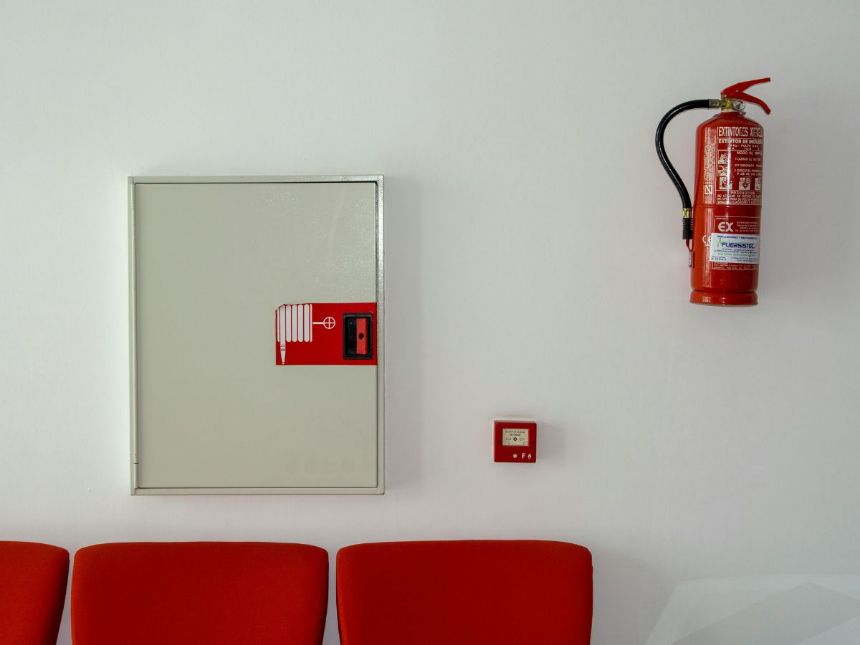Many licensed fire protection companies across Australia are equipped to handle old or expired fire extinguishers. These businesses can safely depressurise, dismantle, and recycle the extinguishers in accordance with environmental regulations. Some may even offer a trade-in or disposal service when you purchase a replacement unit. This is often the most convenient option for workplaces, strata buildings, or anyone with multiple extinguishers to dispose of. Always ensure you choose a company accredited under Australian Standards (AS 1851) to guarantee compliant and environmentally responsible handling.
Why Proper Fire Extinguisher Disposal Matters
Fire extinguishers are essential safety tools, but once they’re expired, damaged, or used, they must be handled with care. Simply throwing an extinguisher in the bin isn’t just unsafe, it could also be classified as illegal dumping of hazardous waste that could result in thousands of dollars' worth of fines. Here’s why:
1. Pressurised Fire Extinguisher Canisters Can Be Dangerous
Even when they appear empty, fire extinguishers are pressurised containers. If punctured or exposed to heat, they can rupture or explode, posing a serious risk to sanitation workers, landfill staff, and the environment. Proper disposal ensures that residual pressure is safely released in a controlled setting.
2. Chemical Waste Hazards Require Special Handling
Many extinguishers, particularly older models, contain chemicals that are harmful to people and wildlife if they leak into the soil or waterways. Dry chemical powders, foam agents, or CO2 gases must be handled through designated hazardous waste programs to prevent contamination.
3. Fire Safety Regulations Apply
Across Australia, fire safety and waste management laws classify fire extinguishers as regulated waste. That means there are legal obligations for households and businesses to dispose of them through approved channels. Non-compliance can lead to fines or environmental breaches, especially for businesses under fire safety audits.
4. Recycling Potential
Fire extinguishers often contain valuable recyclable materials like steel, aluminium, and plastic. But these components can only be recovered safely through authorised recycling centres or scrap metal facilities that know how to depressurise and dismantle them correctly.
5. Community Safety
Leaving old fire extinguishers in public bins, on nature strips, or in garages “just in case” creates unnecessary hazards. Over time, rust, corrosion, or pressure buildup can turn an expired extinguisher into a liability, especially in homes with children or pets.
Can You Recycle Fire Extinguishers?
Yes, fire extinguishers can be recycled through specialised waste recycling facilities that can safely handle hazardous waste.
Fire extinguishers are recycled through a process that separates their metal components and any remaining chemicals. The steel cylinder, which forms the main body, is 100% recyclable and can be melted down to make new products like car parts or railway tracks.
Brass fittings, such as valves and nozzles, are also melted and reused, while other metals like aluminium and stainless steel are sorted and recycled by specialised facilities. Chemical contents are handled carefully, dry chemical powder (DCP) from ABE extinguishers can be vacuumed out, processed, and even reused as fertiliser.
Carbon dioxide from CO2 extinguishers is safely vented by professionals, allowing the cylinder to be reused. Water-based extinguishers are simply emptied and their metal casings recycled.
How Do I Know if My Fire Extinguisher Needs to be Disposed of or Recycled?
Like most safety equipment, fire extinguishers don’t last forever. Over time, pressure levels can drop, components can wear out, and the extinguisher may no longer work as intended during an emergency. Knowing how to tell when it’s time to replace or recycle your extinguisher helps you stay protected, and ensures it’s handled responsibly.
Check the pressure gauge
Most fire extinguishers have a small pressure gauge on the top or side. If the needle is in the red zone (too high or too low), the extinguisher may no longer be safe or effective and should be serviced or replaced.
Look for damage or corrosion
Dents, rust, leaks, or a cracked nozzle are clear signs that the extinguisher is unsafe to use and should be disposed of properly.
Check the inspection tag or label
Fire extinguishers typically have service tags showing their last inspection date. If it hasn’t been serviced in over a year, it’s time for a professional check-up.
Find the manufacture or expiry date
Most extinguishers last between 5 to 15 years, depending on the type. You’ll usually find the manufacture date stamped on the neck or base of the cylinder. If it’s past its service life or the pressure can’t be maintained, it should be replaced or recycled.
Test the weight
If the extinguisher feels unusually light, it may have discharged or leaked. In that case, it’s no longer usable and should be safely disposed of.
Want More Fire Safety Advice? Contact Fullworks Fire Safety Today!
At Fullworks Fire Safety, we’re committed to helping you stay protected while keeping safety and sustainability top of mind. Properly disposing of old fire extinguishers not only prevents potential hazards but also ensures recyclable materials are recovered responsibly.
Whether you need advice on safe disposal, extinguisher servicing, or replacing outdated units, our team is here to make the process simple and compliant with Australian standards. Reach out to our friendly team today to ensure your home or business stays fire-ready and environmentally responsible.




